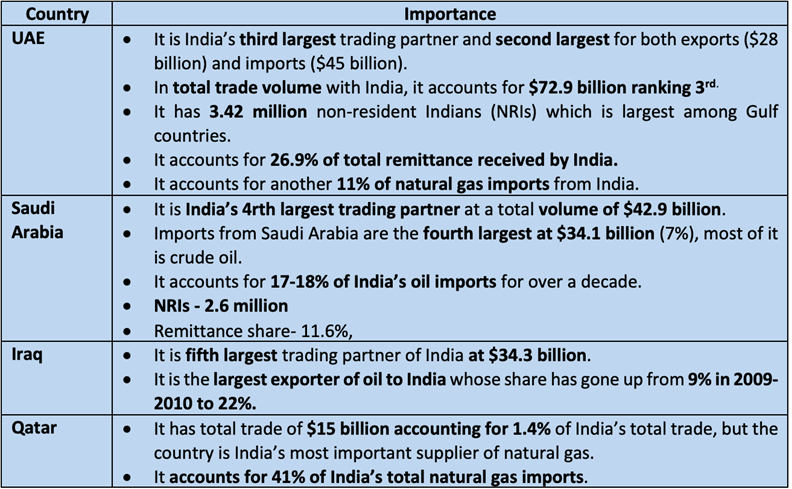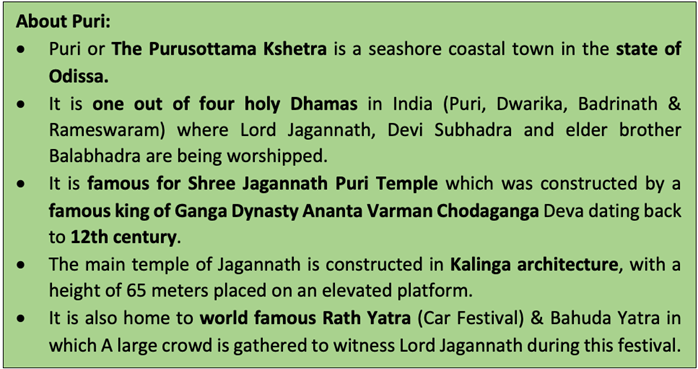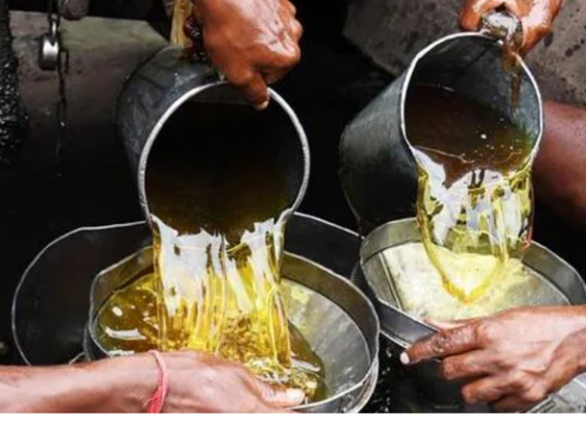Wednesday, 8th June 2022
Environmental Performance Index
In News
India scored the lowest among 180 countries in the 2022 Environment Performance Index (EPI), an analysis by researchers of Yale and Columbia University.
About EPI
- The index provides a data-driven summary of the state of sustainability around the world.
- The EPI, a biennial index, was started in 2002 as Environmental Sustainability Index by the World Economic Forum in collaboration with the Yale Center for Environmental Law and Policy and the Columbia University Center for International Earth Science Information Network.
- The EPI ranks 180 countries on 40 performance indicators.
- The 2022 EPI introduces four innovative air quality indicators to more comprehensively track the public health outcomes of poor air quality. New indicators measure exposure to nitrogen oxides (NOX), sulfur dioxide (SO2), carbon monoxide (CO), and volatile organic compounds.
India’s Performance
- With a paltry score of 18.9, India’s 180th ranking comes after Pakistan, Bangladesh, Vietnam and Myanmar — the bottom five together make up the poorest performing countries for environmental health.
- India was ranked 168th in EPI-2020, with a score of 27.6.
- India has also scored low on rule of law, control of corruption and government effectiveness.
Overall Findings of the Report
- The United States placed at the 20th spot of the 22 wealthy democracies in the global west and 43rd overall. The relatively low ranking reflects the rollback of environmental protections in the recent past including the withdrawal from the Paris Climate Agreement and weakened methane emission rules.
- Countries such as India and Nigeria are in the bottom rankings. Their low EPI scores indicate the need for greater attention to the spectrum of sustainability requirements with high priority focus on critical issues such as air and water quality, biodiversity and climate change.
- As per EPI estimates, only a handful of countries, including Denmark and the United Kingdom, are on track to meet net zero emission goals by 2050.
- Nations such as China, India, and Russia are headed towards the wrong direction with rapidly rising greenhouse gas emissions.
- The EPI projections indicate that four countries — China, India, the United States, and Russia — will account for over 50% of residual global greenhouse gas emissions in 2050 if the current trends hold
Sources:
Food Safety Index 2021-22 - Edukemy Current Affairs
In News
On the occasion of World Food Safety Day on June 7, released the 4th State Food Safety Index.
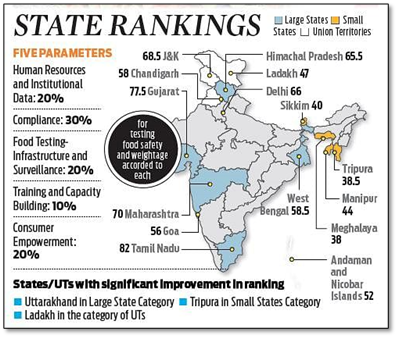
The major findings of State Food Safety Index2021-2022
- Ranking of States/UTs:
- Among the Large States: Tamil Nadu is the top-ranking state, followed by Gujarat and Maharashtra.
- Among the Small States: Goa is the top-ranking state followed by Manipur and Sikkim.
- Among UTs: Jammu & Kashmir is the top-ranking UT, followed by Delhi and Chandigarh.
- States/UTs with significant improvement in ranking during last year:
- Uttarakhand in Large State Category
- Tripura in Small States Category
- Ladakh in the category of UTs.
About the Index
- To encourage States/UTs to improve their performance and work towards establishing a proper food safety ecosystem in their jurisdiction, the Food Safety and Standards Authority of India (FSSAI) releases the State Food Safety Index (SFSI) annually for each financial year.
- The Index reflects the overall performance of the States/ UTs based on various parameters that are broadly classified under 5 significant factors assigned with separate weightage of marks. These include:
- Human Resources and Institutional Data (with 20% weightage)
- Compliance (with 30% weightage)
- Food Testing- Infrastructure and Surveillance (with 20% weightage)
- Training & Capacity Building (with 10% weightage) and
- Consumer Empowerment (with 20% weightage)
- The Index is therefore a dynamic quantitative and qualitative benchmarking model that provides an objective framework for evaluating food safety across all States/UTs.
Source:
Image source:
Debates around Surrogacy act - Edukemy Current Affairs
In News
Petitions have been filed in Delhi High Court challenging changes in the Surrogacy law in India
About the News
- Parliament last year passed two Acts - Surrogacy (Regulation) Act and Assisted Reproductive Technologies Act - related to fertility services.
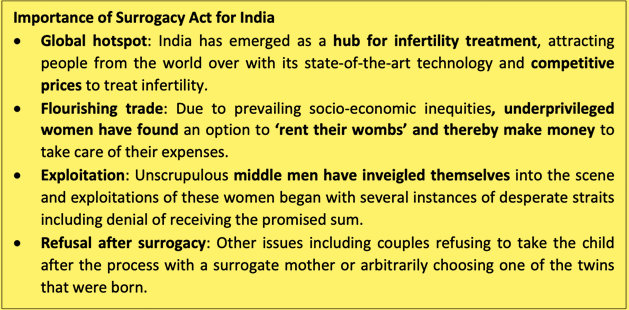
- The law defined a couple as a married Indian “man and woman” and prescribes an age - woman in the age of 23 years to 50 years and the man between 26 years to 55 years.
- As per the Surrogacy Act that kicked in from January this year, a married couple can opt for surrogacy only on medical groundse., 'altruistic surrogacy.
- Petitions have been filed recently questioning the law which prohibits genuine couples to avail surrogacy based on age, marital status and even gender.
What are the laws associated with Surrogacy in India?
- About: The Surrogacy (Regulation) act soughts to regulate the surrogacy part of a rather flourishing infertility industry in the country.
- Legal recognition: The act defines ‘surrogacy’ as a practice where a woman undertakes to give birth to a child for another couple and agrees to hand over the child to them after birth.
- Altruistic surrogacy: It means surrogacy wherein only the medical expenses and insurance coverage is provided by the couple to the surrogate mother during pregnancy and no other monetary consideration will be permitted.
- Eligible couples: Any couple that has ‘proven infertility’ are candidates. The ‘intending couple’ as the Act calls them, will be eligible if they have a ‘certificate of essentiality’ and a ‘certificate of eligibility’ issued by the appropriate authority.
- Mandatory conditions: Couples must fulfil the following conditions:
- Status: They should be Indian citizens who have been married for at least five
- Age: The female must be between 23 to 50 years and the male, 26 to 55
- Previous offspring: They cannot have any surviving children (biological, adopted or surrogate); However, this would not include a ‘child who is mentally or physically challenged or suffers from life threatening disorder or fatal illness.’
- Single candidate: The law allows single women to resort to surrogacy if she is either a widow or a divorcee and is between the age of 35 to 45 years. However, Single men are not
- Surrogate mother: Only a close relative of the couple can be a surrogate mother, one who is able to provide a medical fitness certificate. She should have been married, with a child of her own, and must be between 25 and 35 years, but can be a surrogate mother only once.
What are the various issues associated?
- Lacks pragmatism: Petitioners have questioned why marital status, age, or gender were the criteria for being allowed to commission or not commission surrogacy in India.
- Lacks inclusiveness: The act does not allow single women, or men, or gay couples to go in for surrogacy.
- Restrictive and narrow: As per the act, a married couple can opt for surrogacy only on medical grounds. Additionally, the couple should not have a child of their own.
- Effectiveness: Taking clue from a similar, stringent law — the Transplantation of Human Organs Act, experts have raised apprehensions as the organ commerce continues to thrive in the country despite a stern visage.
Sources:
World Ocean Day - Edukemy Current Affairs
On June 8, United Nations marks World Oceans Day each year. The concept of World Oceans Day was first proposed by the UN in 1992 at the Earth Summit in Rio de Janeiro. It was suggested that a day be observed to raise awareness about the crucial role oceans play in our lives and ways in which people can help protect them. Since 2002, the World Ocean Network has built support for ocean awareness events on June 8 with the help of sponsorship from UNESCO's Intergovernmental Oceanographic Commission. According to the UN, oceans produce about 50 percent of the planet’s oxygen and are home to earth’s biodiversity. It is the main source of protein for over 1 billion people in the world.
By 2030, about 40 million people will earn a living by being employed in ocean-based industries. The theme for 2022 is “Revitalization: Collective Action for the Ocean."
Source:
Santoor music instrument - Edukemy Current Affairs
- Context: Pandit Bhajan Sopori, the Santoor legend has recently passed away.
- Santoor is a stringed instrument, popular in Hindustani Classical Music, which is considered both a percussion and string instrument and is classified as a zither-an instrument with strings stretched across the length of the body.
- It is believed to have originated in ancient Mesopotamia, around the 4th century CE and, in both pre-Islamic Persia and the modern-day Middle East.
- In the 14th century, Persians brought the Santoor to the Kashmir Valley, and eventually it became essential to traditional Kashmiri folk and Sufi music.
- In 1950s, Pandit Shivkumar Sharma adapted the santoor for North Indian classical tradition.
- The body of the santoor instrument is essentially a box shaped like a trapezoid with a frame made of wood—typically walnut or maple.
- The typical Indian santoor has around 90 steel strings.
- The strings are struck with lightweight wooden mallets, called Mezrab, that cause them to vibrate across the soundboard.
- The santoor is the only Indian classical Instrument which is struck.
Source:
Image source:
Agni-4 missile - Edukemy Current Affairs
- Context: A successful training launch of Agni-4, was recently carried out at Abdul Kalam Island, Odisha.
- Agni-IV is an Indian solid-fuelled intermediate-range ballistic missile (IRBM) with a range of up to 4,000 km, developed by DRDO.
- It is a two-stage, solid-fuelled missile weighing 17,000 kg.
- It employs an inertial guidance system with ring laser gyroscopes and flex seal thrust vectoring systems to control its orientation in flight.
- The missile is accurate to less than 100 meters circular error probable (CEP) at a range of 4,000 km.
- It is capable of loading nuclear and conventional payloads and can carry a 1,000-kg payload and can go as high as 900 km.
- This launch has reaffirmed India's policy of having a Credible Minimum Deterrence Capability.
Source:
Image source:
Divyangjan - Edukemy Current Affairs
- Context: The Tamilnadu Chief Minister has directed the State government officials, to go the extra mile in serving the Divyangjan.

- Divyang is a Hindi word which means the one with a divine body part.
- The word is used instead of 'Viklang', for someone with non-functional body parts.
- The term was used first in 2015.
- However, the United Nations’ Committee on the Rights of Persons with Disabilities (CRPD) has marked the word ‘Divyangjan’ as controversial and similar to derogatory terminologies such as “mentally ill”.
- Divyangjan Swavalamban Yojana Scheme for Persons with Disabilities: The main objective of the Scheme is to assist the needy disabled persons by providing concessional loan for economic and overall empowerment.
- As per the Census 2011, the differently abled population in India stands at 2.21 %. There has been a marginal increase in the differently-abled population in India, with the figure rising from 21.9 million in 2001 to 26.8 million over the period of 10 years.
Source:
- Meaning of Divyang or Divyangjan and the Problems with these Word
- ‘Divyangjan’ is a controversial word similar to ‘mentally ill’, says U.N. body
- Persons with Disabilities (Divyangjan) in India:
Image source:
National Asset Reconstruction Company Ltd
- Context: The Finance Minister has recently reviewed the progress in setting up of the National Asset Reconstruction Company Limited (NARCL).
- NARCL (so-called bad bank) has been incorporated under the Companies Act and has applied to Reserve Bank of India for license as an Asset Reconstruction Company (ARC).
- NARCL has been set up by banks to aggregate and consolidate stressed assets for their subsequent resolution.
- Stressed assets acquired by NARCL will be managed by IDRCL, for price discovery and value addition.
- India Debt Resolution Company Ltd (IDRCL) is a service company/operational entity, established to manage the stressed assets and engage with market professionals including turnaround experts.
- Public Sector Banks will maintain 51% ownership in NARCL.
- NARCL will be starting with total capital of Rs 6,000 crore.
- In 2021, the cabinet cleared the proposal to provide a government guarantee worth Rs 30,600 crore to security receipts issued by NARCL and the guarantee will be valid for a period of five years.
Source:
Image source:
Open E-commerce: Time is Now - LiveMint
Essence: India has the largest fintech adoption rate of 87% and Aadhar has played an important role in this. This success has opened a new opportunity of adopting Open Network for Digital Commerce (ONDC) which can revolutionize digital commerce.
ONDC aims to move from a platform-centric model (where the buyer and seller must use the same platform or application to be digitally visible and do a business transaction) to an open network. This will democratize digital commerce. India being a country of multitude of MSMEs where millions of small transactions is a norm, adoption of ONDC will be a game changer.
It will provide equal opportunity to all sellers and will make e-commerce more inclusive and accessible for consumers. ONDC will have to ensure that it complies with IT Act 2000 and whenever the Personal Data Protection Bill becomes law. India is witnessing a digital revolution and digital platforms are adding extra heft to India’s global diplomacy because of its ability to assist countries in making digital transition.
Why should you read this article?
- To appreciate the importance of the ongoing digital revolution.
- To understand utility of adopting Open Network for Digital Commerce (ONDC)
Source:
Crime and copyright infringement: The Hindu
Essence: The article discusses the recent SC judgement regarding copyright infringement. The ‘Knit Pro International v. The State of NCT’ has stated that copyright infringement is a cognisable offence under the CrPC.
Making a copyright infringement as cognisable give the police rights to begin investigations into allegations of copyright infringement on receiving a complaint. Non- cognisable offence requires the permission of the judicial magistrate to initiate the investigation.
The author suggests that the judgment needs to reviewed due to several gaps in the Copyright Act. The deeper question that requires a re-look is the criminalisation of copyright infringement in India. India’s international law obligations under the Trade-Related Aspects of Intellectual Property Rights (TRIPS) do not require India to criminalise all kinds of copyright infringement.
As per the authors, unless the law is amended to not only differentiate between the different acts of copyright infringement but also require prior judicial cognisance as a precondition of criminal investigation by the police, the Supreme Court’s recent decision will pave the way for the police to impinge on civil liberties, impede the ease of business and have chilling effects on free speech.
Why should you read this article?
- To understand Copyright Infringement
- To understand the result of the SC’s ruling w.r.t. Copyright Infringement
Source:
Sustainable Architecture - Edukemy Current Affairs
Background
- Architecture has the power to convert a space either into a concrete jungle or a sustainable space.
- Sustainable architecture company Compartments S4, is one such initiative which has led projects to promote eco-friendly architecture in rural India.
About the Company
- The idea of S4 was conceived by few college students who got inspired from the traditional rural architecture and construction methods from a village in Ahmedabad.
- The company designs not just houses, but also eco-friendly and sustainable spaces, using eco-friendly materials such as clay, locally available limestone, earthquake-resistant structures, etc.
- They even conduct workshop modules to impart knowledge and methodological experience for disseminating concepts and ideas.
- Among CS4's clients are the Nainital Tourism Department, the Surat Forest Department, the ISCON Group, Shankar Ice Cream, Midas Hospitality Group, and UNICEF's Water, Sanitation, and Hygiene (WASH) programme.
Quote: “Our biggest challenge in this new century is to take an idea that seems abstract – sustainable development – and turn it into a reality for all the world’s people” By Kofi Annan
Source:
Share the article
Get Latest Updates on Offers, Event dates, and free Mentorship sessions.

Get in touch with our Expert Academic Counsellors 👋
FAQs
UPSC Daily Current Affairs focuses on learning current events on a daily basis. An aspirant needs to study regular and updated information about current events, news, and relevant topics that are important for UPSC aspirants. It covers national and international affairs, government policies, socio-economic issues, science and technology advancements, and more.
UPSC Daily Current Affairs provides aspirants with a concise and comprehensive overview of the latest happenings and developments across various fields. It helps aspirants stay updated with current affairs and provides them with valuable insights and analysis, which are essential for answering questions in the UPSC examinations. It enhances their knowledge, analytical skills, and ability to connect current affairs with the UPSC syllabus.
UPSC Daily Current Affairs covers a wide range of topics, including politics, economics, science and technology, environment, social issues, governance, international relations, and more. It offers news summaries, in-depth analyses, editorials, opinion pieces, and relevant study materials. It also provides practice questions and quizzes to help aspirants test their understanding of current affairs.
Edukemy's UPSC Daily Current Affairs can be accessed through:
- UPSC Daily Current Affairs can be accessed through Current Affairs tab at the top of the Main Page of Edukemy.
- Edukemy Mobile app: The Daily Current Affairs can also be access through Edukemy Mobile App.
- Social media: Follow Edukemy’s official social media accounts or pages that provide UPSC Daily Current Affairs updates, including Facebook, Twitter, or Telegram channels.

